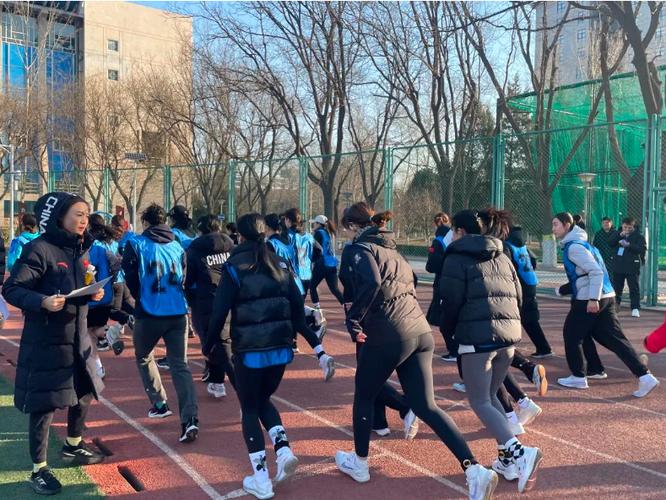Optimizing Athletic Training Programs for Rainbow Port District
Rainbow Port District in Shanghai’s Hongkou District is a vibrant community with a growing interest in sports and athletic development. Crafting effective training programs tailored to the specific needs of athletes in this area requires a comprehensive approach. In this guide, we’ll explore the key components of optimizing athletic training programs for Rainbow Port District, encompassing physical conditioning, skill development, injury prevention, and mental resilience.
1. Assessment and Goal Setting
Before designing any training regimen, it's essential to conduct thorough assessments of athletes' current physical condition, skill levels, and performance goals. This can include:
Physical assessments:
Evaluate strength, flexibility, endurance, and cardiovascular health through standardized tests.
Skill assessments:
Identify specific strengths and weaknesses in fundamental athletic skills relevant to the chosen sport(s).
Goal setting:
Collaborate with athletes to establish clear, measurable, and realistic shortterm and longterm goals.
2. Periodization and Training Structure
Implementing a periodized training plan ensures athletes progress steadily while minimizing the risk of overtraining and injuries. This involves dividing the training year into distinct phases, each with its focus:
Preseason:
Emphasize building foundational strength, improving technique, and addressing any imbalances or weaknesses.
Inseason:
Shift focus towards maintaining peak performance, refining skills, and tactical preparation for competitions.
Offseason:
Allow for recovery, crosstraining, and addressing any lingering injuries while laying the groundwork for the next season.
3. Strength and Conditioning
A wellrounded strength and conditioning program forms the backbone of athletic development, enhancing performance and reducing the risk of injuries. Key elements include:
Strength training:
Incorporate exercises targeting major muscle groups with a focus on functional movements relevant to the sport(s) of choice.

Endurance training:
Develop aerobic and anaerobic endurance through interval training, tempo runs, and sportspecific drills.
Flexibility and mobility:
Implement dynamic warmups, static stretches, and mobility exercises to improve range of motion and prevent injuries.
Power and explosiveness:
Integrate plyometric exercises, Olympic lifts, and speed drills to enhance quickness and explosiveness.
4. Skill Development and Technique Refinement
While physical conditioning is crucial, honing sportspecific skills and techniques is equally vital for athletic success. This involves:
Technical drills:
Devote time to practicing and refining fundamental skills such as shooting, passing, dribbling, or specific movements relevant to the sport(s).
Tactical awareness:
Enhance decisionmaking abilities, game understanding, and situational awareness through simulated game scenarios and strategic analysis.
Video analysis:
Utilize video feedback to identify areas for improvement and track progress over time.
5. Injury Prevention and Rehabilitation
Injuries can derail an athlete's progress and performance, making injury prevention strategies paramount. Consider the following:
Proper warmup and cooldown:
Emphasize dynamic warmups and cooldowns to prepare muscles and joints for activity and aid in recovery.
Corrective exercises:
Address muscular imbalances, weak stabilizer muscles, and movement dysfunctions through targeted exercises and corrective techniques.
Crosstraining:
Incorporate activities that complement the primary sport(s), providing variety and reducing the risk of overuse injuries.
Rest and recovery:
Allow adequate time for rest between training sessions and prioritize quality sleep and nutrition to support the body's recovery processes.
6. Mental Conditioning and Resilience
Athletic success isn't solely determined by physical prowess; mental resilience and psychological skills play a significant role. Strategies to enhance mental toughness include:
Goal setting and visualization:
Encourage athletes to visualize success, set processoriented goals, and develop mental imagery techniques.
Focus and concentration:
Teach mindfulness techniques, breathing exercises, and attentional control strategies to maintain focus under pressure.
Resilience training:
Foster a growth mindset, emphasizing the importance of embracing challenges, learning from setbacks, and maintaining optimism.
Stress management:
Provide resources for managing performance anxiety, stress, and pressure situations effectively.
Conclusion
Crafting effective training programs for Rainbow Port District athletes requires a multifaceted approach that addresses physical, technical, mental, and injuryrelated aspects of athletic development. By implementing a structured and comprehensive training regimen, athletes can maximize their potential, achieve their goals, and thrive both on and off the field of play.

